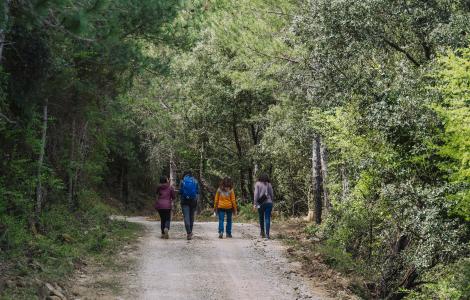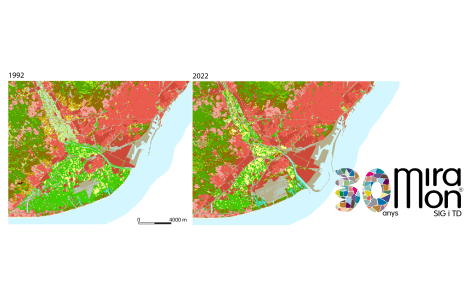With a few biological traits we can predict if two species interact

This study, in which the CREAF participated, determined that relationships between species follow a few common patterns, and, therefore, with little data a lot of detail can be understood regarding the ecological networks of ecosystems and predict a species’ evolution in the face of perturbations.

Seen up close, an ecosystem may seem like a real battlefield. Prey, predators, plants and animals, competitors and allies are all fighting to eat and not be eaten. But, in reality, not all species are interacting with each other. Two species interact depending on their characteristics or biological traits. For example, body size: a medium fish will eat a little fish, but not a big fish. Or color, a butterfly will visit a blue flower, but not a yellow flower.
A group of experts in computer processing University of Chicago, together with ecologists at the CREAF and other experts from other research centers have discovered recently that the interactions between species are not as difficult to predict as it seems because, in the end, the intereactions follow common standards. In their study, published in the journal Ecology Letters, they conclude that in order to know if two species interact we only need to know a few characteristics of its individuals. Two, three or four features may be needed, but never more than ten.

The study analyzed more than 200 ecological networks from all over the world, from the coral reefs of the Caribbean to the meadows of New Zealand, with the aim of finding the minimum number of characteristics that explain, with fidelity, the relationships between species in an ecosystem. In many cases taking into account only one or two traits could already predict a considerable amount of the reality. For example, taking into account the size of a fruit and the opening of the beak of a bird explained quite well the food relationship between these two groups of organisms. In the case of pollinators and flowers, flowering time explains much of the interactions established between a flower and an insect.
"This discovery is very interesting because, until now, we did not have a clear idea of how many traits are needed to predict all the interactions that occur in a network," says Anselm Rodrigo, researcher at the CREAF and professor at the Autonomous University of Barcelona.
The study also shows that the relevant biological features are different for each type of network (plant-pollinator, predator-prey, and host-parasite). Finally, the characteristics of the producer (floor, prey, and host) tend to be more crucial than consumer.
Until now it was thought that the total number of characteristics that had to be taken into account was much larger, so scientists took enormous amounts of different data when studying relationships within ecosystems. "This finding will save ecologists time and effort when it comes time to describe the structure of ecosystems. At the same time, it will help scientists build some very reliable mathematical models with only a few choice variables. “We can more easily predict the responses of ecosystems in the face of perturbations, for example to determine what interactions will help an invasive species establish," said Jordi Bosch, a researcher at the CREAF.
Article:
Eklöf, A., Jacob, U., Kopp, J., Bosch, J., Castro-Urgal, R., Chacoff, N. P., Rodrigo, A.,. . . Allesina, S. (2013). The dimensionality of ecological networks. Ecology Letters, 16(5), 577-583.
Noticias relacionadas

El IPBES publica dos informes para transformar la forma en que nos relacionamos con la naturaleza, conservarla y sobrevivir

El impacto social de la investigación se consolida en la cultura científica del CREAF



